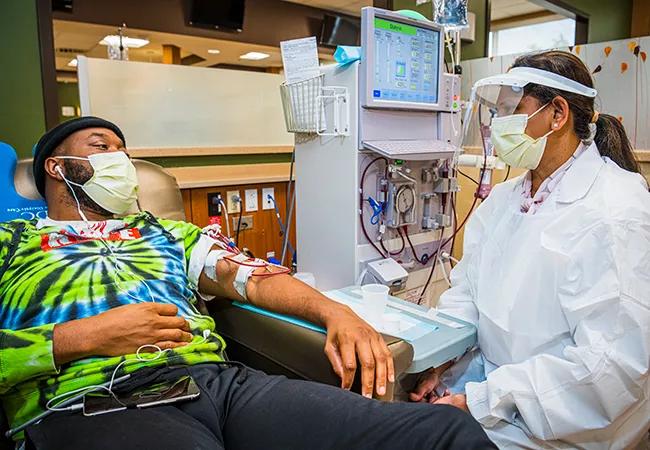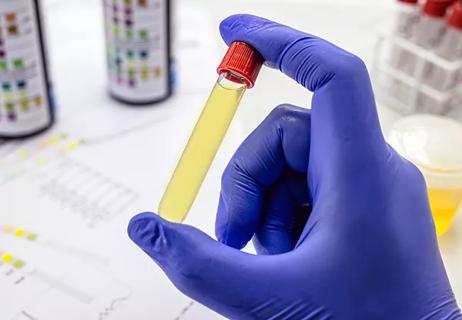Vascular access is finally getting the attention it deserves

Hemodialysis was established in the 1960s and remains the most common treatment for kidney failure in the United States. Although modernization of hemodialysis equipment has made the treatment safer and better, the original forms of vascular access required for performing hemodialysis have remained largely unchanged.
Advertisement
Cleveland Clinic is a non-profit academic medical center. Advertising on our site helps support our mission. We do not endorse non-Cleveland Clinic products or services. Policy
In recent years, however, a concerted effort to improve the experience and quality of life for dialysis patients has given impetus to major innovations in access creation and patency. A recent article in the American Journal of Kidney Diseases reviewed these approaches and highlighted the issues they solve.
“These new tools should break down many barriers to initiating permanent vascular access and help shorten wait times for vascular access creation,” says first author Tushar Vachharajani, MD, Cleveland Clinic’s Director of Global Nephrology. “Options for prolonging vascular access patency and treating stenosed and occluded veins should allow more patients to remain on hemodialysis and enable us to individualize vascular access options for each patient.”
Endovascular arteriovenous fistula (AVF) creation offers multiple advantages, including better flow dynamics that reduce shear stress, neointimal hyperplasia and trauma to the vessel wall. EndoAVF can be created under conscious sedation in the office, thereby reducing costs and wait times.
When patients are unsuitable for AVF creation, grafts are the next option. However, available options are plagued with problems that limit their utility. Dr. Vachharajani is cautiously optimistic about the new generation of bioengineered vascular conduits, which appear to be more durable and less prone to infection, stenosis, thrombosis and aneurysms than currently available grafts.
A graft with an innovative self-sealing membrane allows cannulation as early as 48 to 72 hours after implantation. “These grafts may play a role in reducing the rate of central venous catheter (CVC) use in the incident dialysis population,” he says.
Advertisement
Prolonged CVC use is among the problems that can lead to central vein stenosis. Total occlusion prevents vascular access in the upper extremities. Recanalization options are high-risk procedures. A device approved in 2020 allows a new track to be created that bypasses the occlusion. In European studies and practice, the device has exhibited a high success rate and low rate of complications.
The recurrence of stenosis in an AVF access, resulting in dysfunction, is a problem Dr. Vachharajani and his colleagues aptly call the “Achilles’ heel of hemodialysis.” Two innovations show promise in maintaining long-term patency and reducing the risk of access thrombosis. These include performing angioplasty with paclitaxel-coated balloons and adding an endovascular stent graft consisting of a nitinol frame covered with a durable nonstick coating. Studies confirm their superiority over conventional balloons and bare-metal stents.
Technological advances in the pipeline include devices designed to hasten AVF maturation, guide cannulating needles into the fistula and prevent intraluminal tissue growth with resulting stenosis.
New tools for monitoring stenosis may also be available in the near future. One system will enable a fistula to be monitored remotely or while a patient is on dialysis to provide insight into whether the patient is stable or stenosis is progressing.
These advances in techniques and devices are allowing dialysis care to move from a “fistula-first” to a “right access” approach. “The growing number of exciting new options is enabling us to focus on providing the best intervention for an individual,” says Dr. Vachharajani.
Advertisement
“Vascular access was always considered a stepchild,” he continues. “Now that the International Society of Nephrology, Kidney Health Initiative from American Society of Nephrology and other major professional societies have recognized its importance, the pathway to new innovations has opened up, and vascular access is finally getting the attention it deserves.”
Advertisement
Advertisement

Authors summarize the recent evidence and offer two clinical scenarios

Key considerations when diagnosing and managing severe hyponatremia

Clinicians should individualize dosing practices based on patient risk factors and preferences

Fully-automated process uses preop CT, baseline GFR to estimate post-nephrectomy renal function

Identifying barriers in the renal genetic assessment of Black patients

Getting patients to their goal blood pressure

Study highlights benefits of nephrologist-led urine sediment analysis

Using sequencing data to identify novel factors linked to kidney disease with unknown origin